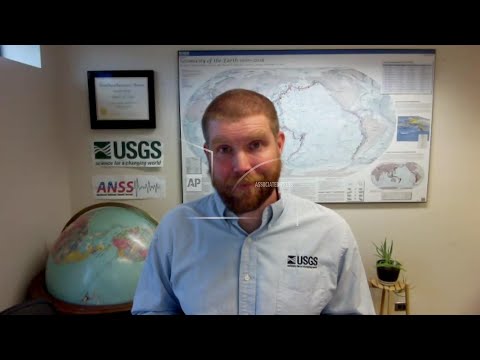(28 Mar 2025)
RESTRICTION SUMMARY:
++BLACK FRAMES++
++ENDS ON SOUNDBITE++
ASSOCIATED PRESS
Golden, Colorado – 28 March 2025
1. SOUNDBITE (English) William Yeck, research geophysicist at United States Geological Survey:
"Earthquakes are occurring all the time across the globe. Big earthquakes occur less frequently. So magnitude seven and larger earthquakes, we see about 13 a year on average, more or less. And it varies from year to year. And most of those – no one notices because they occur in the ocean and no one feels the shaking from them. The earthquakes are occurring, especially these large earthquakes, primarily due to the interactions of tectonic plates. So as tectonic plates move next to each other, they stick and then eventually they’ll slip. And when they slip, they cause an earthquake."
++BLACK FRAMES++
2. SOUNDBITE (English) William Yeck, research geophysicist at United States Geological Survey:
"This earthquake in Myanmar is significant because it occurred close to population densities. So it’s a shallow rupture that caused severe shaking or violent shaking close to where people live. And when there’s severe shaking close to where people live, it can cause damage to buildings, which can result in fatalities by collapse. This earthquake, you know, we expect the most violent shaking to be where rupture occurred in the center of Myanmar. But the shaking can be felt at great distances."
++BLACK FRAMES++
3. SOUNDBITE (English) William Yeck, research geophysicist at United States Geological Survey:
"If you feel shaking, the guidance depends on where you are in the world. So in the United States, we have very strict building codes. So we expect that our buildings will survive the shaking that they could be exposed to. And because of that we have guidelines that say to drop, cover and hold on. So that means drop to the ground, cover your head, and then hold on to whatever’s covering you. So typically that would be something like a desk if you’re at work. In other parts of the world, there’s different guidance, because there might not be that expectation that the buildings will sustain that severe shaking. So there might be guidance to say, leave a building if you start feeling shaking, but really you have to follow the local guidance for what you should do in an earthquake."
++BLACK FRAMES++
4. SOUNDBITE (English) William Yeck, research geophysicist at United States Geological Survey:
"We do know that aftershocks are expected. And typically, they can be, you know, one magnitude smaller on average than the main shock. But you see earthquakes– aftershocks that are, you know, about the same size as the main shock. Or sometimes the main shock ends up being a foreshock to a bigger earthquake."
++BLACK FRAMES++
5. SOUNDBITE (English) William Yeck, research geophysicist at United States Geological Survey:
"There’s secondary hazards that come from earthquakes, too. So there can be landslides that are triggered or fires, or if you live near the ocean, that could be tsunamis if it’s an offshore earthquake. So, you know, you really have to be cognizant of the specific hazards around you."
++BLACK FRAMES++
6. SOUNDBITE (English) William Yeck, research geophysicist at United States Geological Survey:
"People want predictions in terms of this earthquake of this size is going to occur in this location at this time, and the science isn’t there. Really what we do is we look at where seismicity has occurred in the past and how frequently it occurs, so we can get a general sense of the areas that have the highest seismic hazard."
++ENDS ON SOUNDBITE++
STORYLINE:
Find out more about AP Archive: http://www.aparchive.com/HowWeWork
Twitter: https://twitter.com/AP_Archive
Facebook: https://www.facebook.com/APArchives
Instagram: https://www.instagram.com/APNews/
You can license this story through AP Archive: http://www.aparchive.com/metadata/youtube/4c7733aeb4014292bcc1d41d9547227b
Author: AP Archive
Go to Source
News post in April 2, 2025, 6:05 pm.
Visit Our Sponsor’s:
News Post In – News





